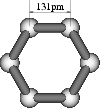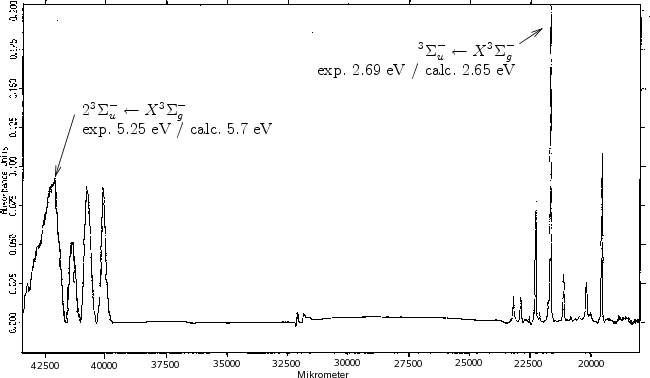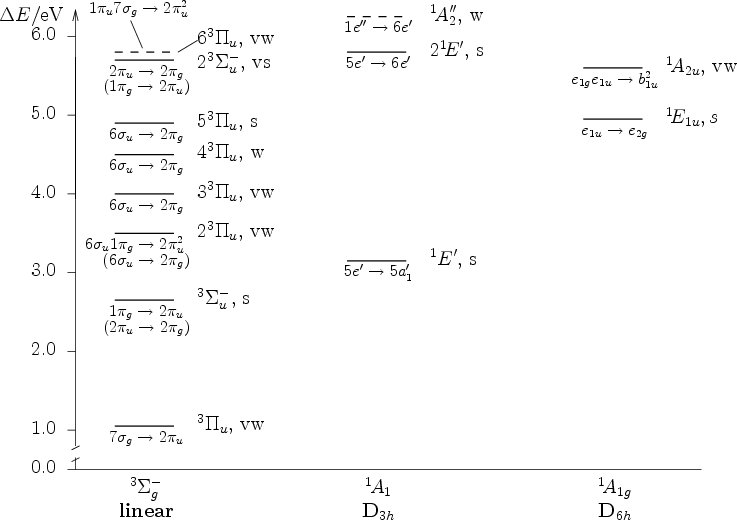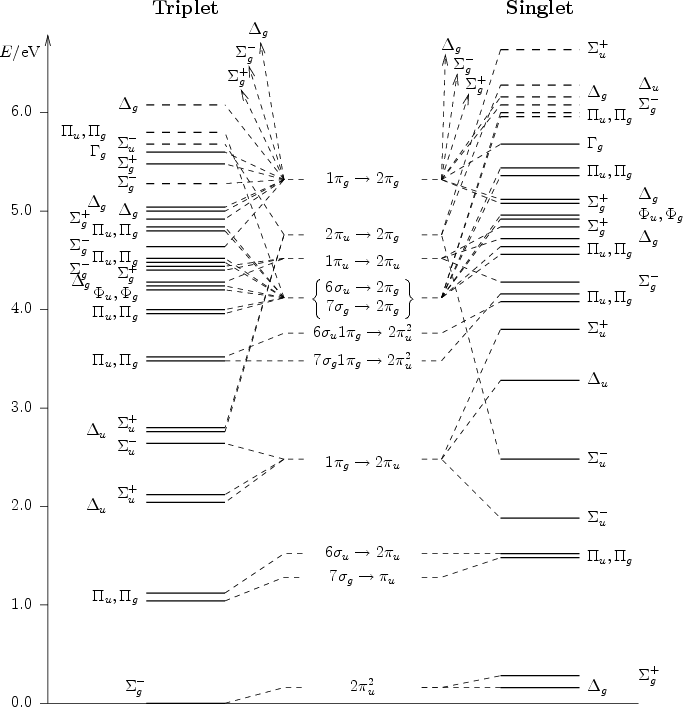


Next: Electronic absorption spectra of
Up: Carbon Clusters
Previous: The electronic spectrum of
Toggle Background
Motivation of the theoretical part of this project is the identification
of C6 and its geometry from observed spectral data.
The geometry of neutral C6 is known from the literature for
the linear [9] and D3h and D6h
[10] species and shown in the following table:
| Point group |
Ground state |
Configuration |
Geometry |
D
 h[9] h[9] |
3 |
|
 |
| D6h[10] |
1A1g |
|
...b3u2 a2u2 a1g2 e1g4 |
|
e1u4;b1u0 e2g0 e2u0 |
|
 |
| D3h[10] |
1A1' |
|
...1a2'2 1a2''2 4a1'2 5e'4 |
|
1e''4;5a1'0 6e'0 2e''0 |
|
 |
The electronic absorption spectrum of C6 prepared
as neutralized mass selected carbon anions in neon matrices is given
by[11]
The calculated spectrum [12] based on
MRCI methods is given by:
suggests strongly that the linear species of C6 has been produced
by the experiment.
Below an explicit state map for linear C6 is given:
Footnotes
- ...63
- In cooperation with
J. P. Maier et. al., University of Basel
and
S. D. Peyerimhoff, University of Bonn
and F. Grein, University of New Brunswick



Next: Electronic absorption spectra of
Up: Carbon Clusters
Previous: The electronic spectrum of
Michael Hanrath
2008-08-13






